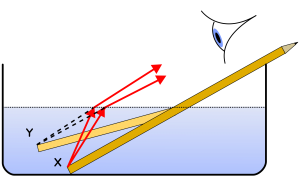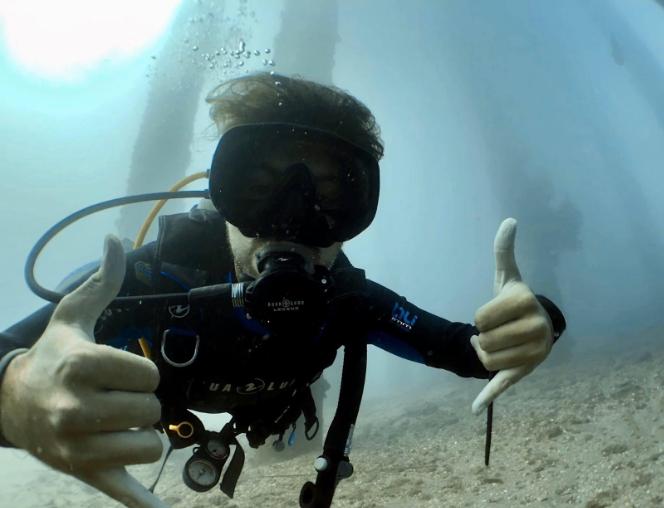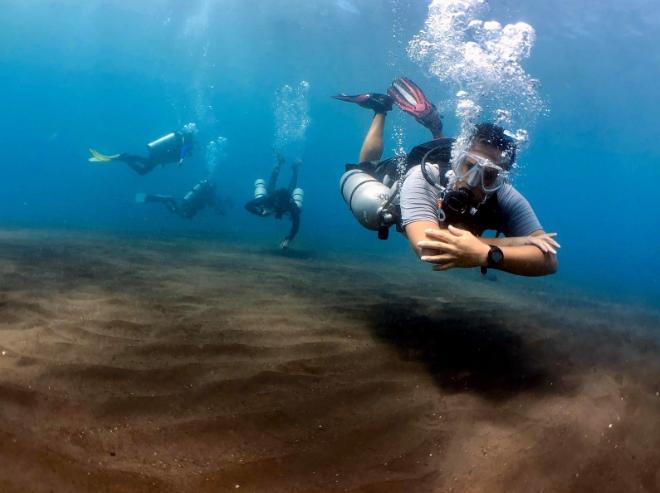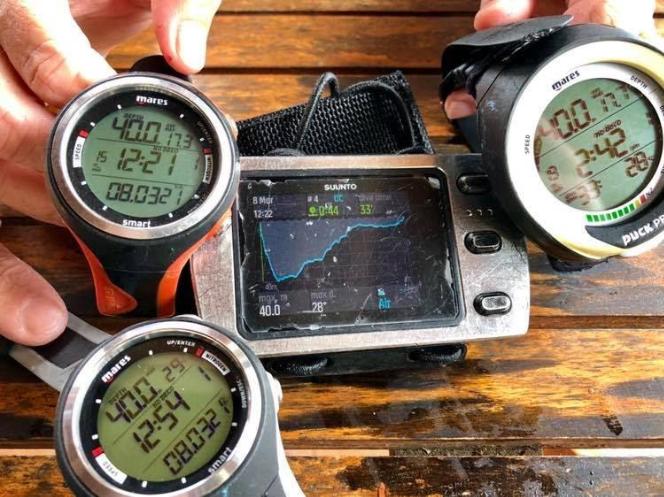PADI IDC Study Notes: Light, Heat and Sound Underwater

Spending time underwater brings a number of new circumstances to the normal concepts we’re used to, such as the transmission of light, heat and sound. In this blog we’ll explain a little more about why objects can appear closer from behind a mask, why it’s difficult to pinpoint the direction of sound underwater, and the physics behind why we need wetsuits.
Light
As we know, light travels slower through different mediums than it does in space, so when light bounces off an underwater object and then travels through water, the glass of your mask, and the air trapped inside, it refracts (bends). The flat glass of your mask will magnify everything you see, making it appear closer than it actually is. This magnification usually results in about a 3:2 increase in apparent size. Divers typically adjust to this effect once they begin diving, but it is still apparent.
With reduced transmission of light, this means that water with poor visibility can get very dark after about 15m, and thanks to refraction, the lower the sun is in the sky (the greater the angle of incidence to the water), the less light is actually transmitted into the water.
Pure water absorbs light on its own, which also contributes to the darkening and uneven appearance of colors underwater. The first color absorbed is red, and it is followed by colors in the orange and yellow wavelengths. This is less noticeable to the naked eye while diving unless bright red or orange objects are observed (the colors will appear dark and muddled at depth) but as soon as a photos/videos are captures and viewed on the surface, the difference becomes very clear.
There is also a concept called visual reversal that is a result of our understanding of loss of color and contrast as things get further away. With reduced visibility under water (significantly so if there is a lot of particulate in the water), the reduction of contrast and color with increased distance is drastically more apparent. Due to an object 15m away appearing almost completely obscured by the water, a diver may visually estimate that objects are much further than they really are.
Sound
In water, sound travels four times as quickly as it does in air. Water, being 800 times as dense as air, has a higher elasticity and transmits sound waves far more efficiently. This means our typical method of determining directionality of sounds, caused by millisecond-long delays between our left and right ear, doesn’t really work underwater. Sounds traveling through water arrive at both ears seemingly instantaneously, and appear to come from overhead. Due to the higher speed and efficiency of sound transmission, sound also travels long distances before dissipating to an inaudible level.
Heat
As is true with light and sound, water has a much higher capacity to absorb and transmit heat than air does. Water conducts heat away from a diver 20x faster than air for any given temperature. Even in warm water, a diver can become cold quite quickly. See Temperature and Scuba Part I: Hyperthermia.
The physics behind this heat loss can be explained by three natural phenomena:
Conduction is the most prominent effect out of the three. It concerns the transfer of heat through matter via direct contact. All water surrounding a diver’s body will conduct heat away until that water reaches the temperature of the surface of the skin, but the water is sooner washed away by current, flow, and the second phenomenon:
Convection is the movement and flow of fluid matter (including water and air) due to changed density as a result of temperature differences. Convection is the single most prominent effect that causes a flame to stand upright. Warm fluids (air, in the case of a flame, or water in the case of a diver) become less dense and naturally rise, to be replaced by colder fluid. This means even if a diver does not move, there will be a flow of water across the skin, greatly increasing the rate at which conduction draws heat away from the body. Swimming and moving, causing water to flow past exposed skin or shift within an exposure suit, will also accelerate the effects of convection.
Radiation is the third method of transmission, but the effects of radiation on the human body are not significant when compared to conduction and convection. Radiation is the transmission of energy through waves of photons – the type of heat you feel coming off of a hot stove element, for example. There is a small amount of energy lost through radiation to the surrounding water when a diver is underwater.
Hopefully this has shed some light on the behaviour of light, sound and heat in water; these concepts are important to understand as a diver to explain a number of things your divers will experience. We go a little further into these and other concepts in our PADI IDC; come visit Bali and become a PADI PRO Today!



